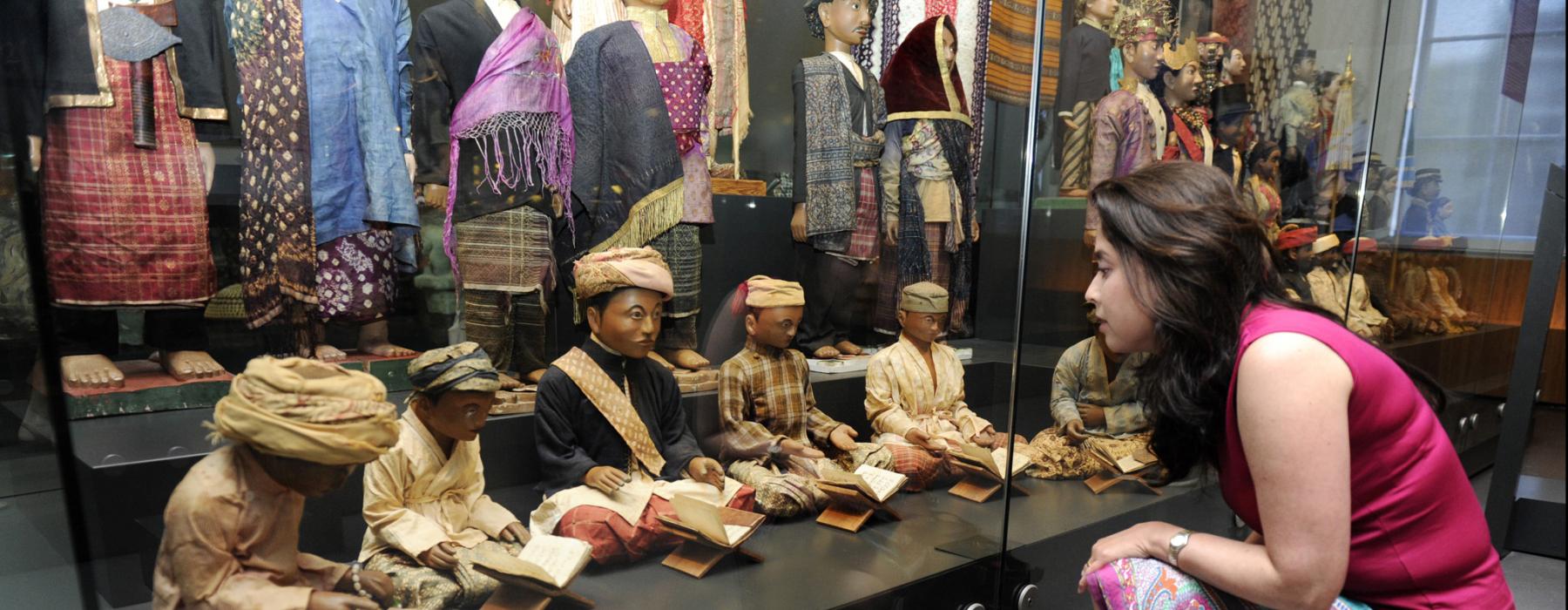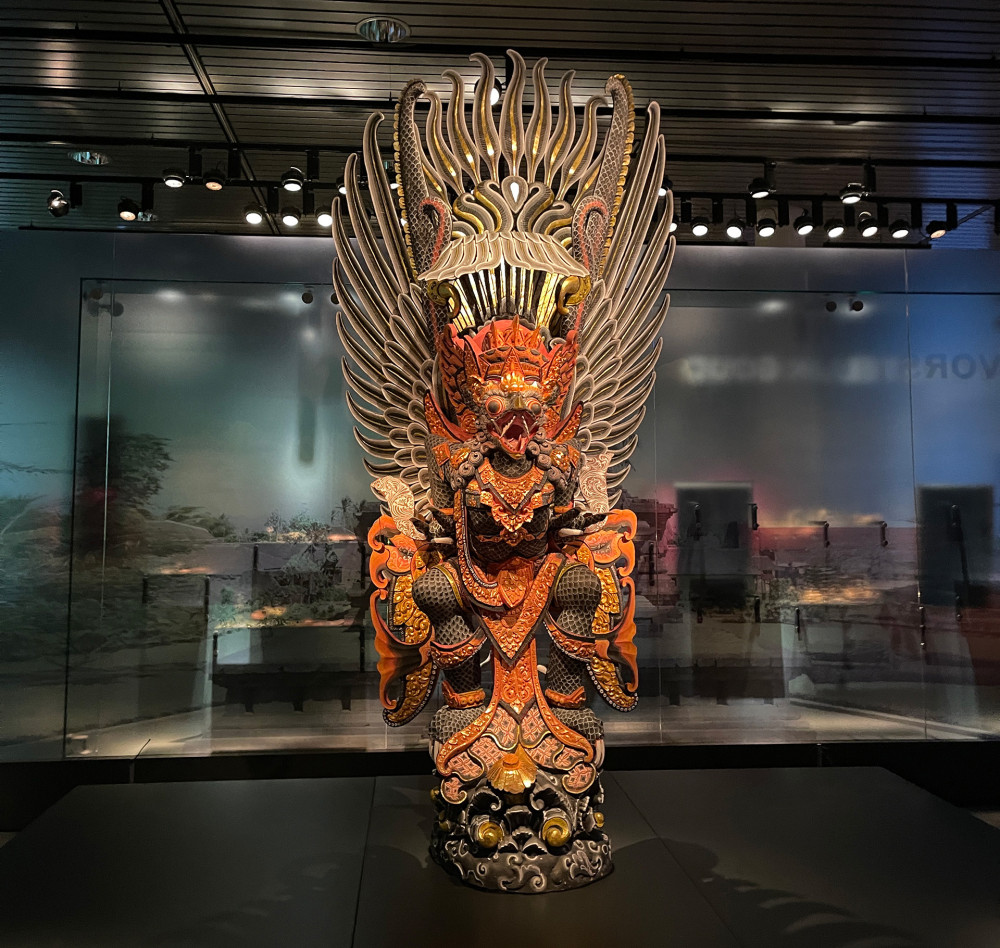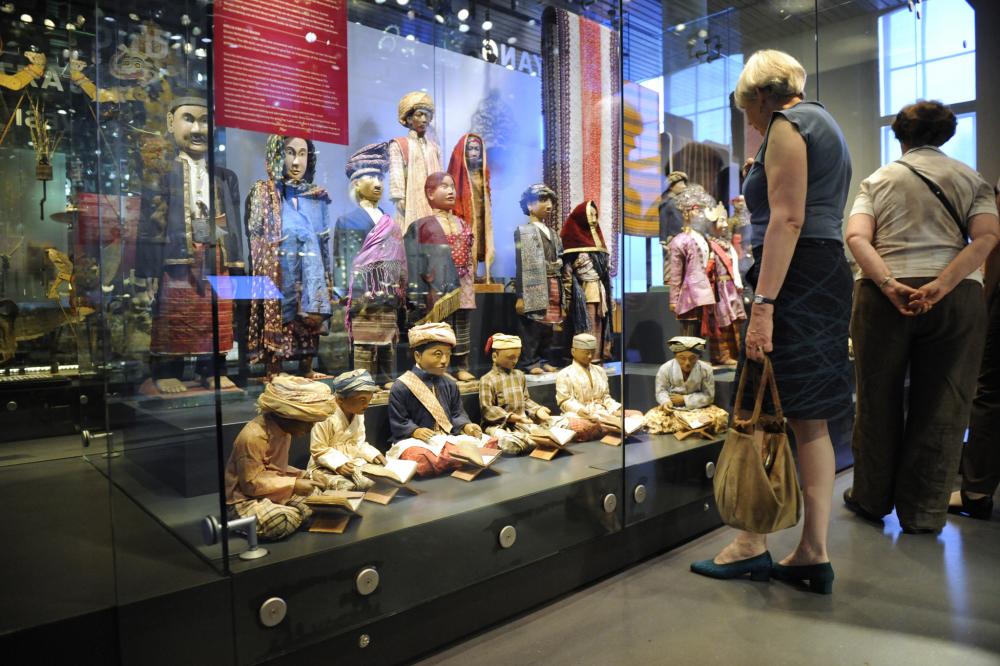
Indonesia is home to more than 300 ethnic groups, each with their own language and culture. The island nation lies at a crossroads of trade routes and has therefore been influenced by cultures and religions from both East and West for centuries. Hinduism and Buddhism were followed by Islam and Christianity. Islam is now the largest religion. Nevertheless, the traditional reverence for ancestors, who offer protection and fertility, has remained important in Indonesia. Statues, masks and ritual objects are an expression of this. Kris, batik and wayang are also still part of living traditions.

